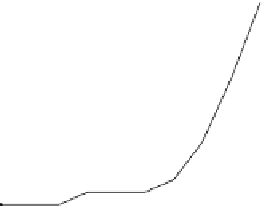Information Technology Reference
In-Depth Information
Cluster 1
Cluster 2
Cluster 3
Cluster 4
Cluster 5
genetics
biology
evolution
evolutionary
science
computation
optimization
visualization
physics
mathematics
math
computational
algorithms
information
computing
theory
semantics
cognition
neural
ai
alife
artificial
life
behavior
simulation
research
powerlaw
nonlinear
complexsystems
dynamics
chaos
emergence
networks
systems
complex
complexity
markets
economics
society
community
organization
ecology
ecosystem
environment
Fig. 5.13
Optimal partition in tag clusters (i.e. 'communities') of the folksonomy graph, when
the
top
200 edges are considered, two 1-tag clusters removed. This partition has a Q = 0.34. After
eliminating the five tags mentioned at the
bottom
, Q can increase to 0.43
Modularity of the optimal partition for different
filtering and normalization criteria
Number of subsets in the optimal partition, for different
filtering an normalization criteria
Same edge weights
Normalized weights
0.6
22
Same edge weights
Normalized weights
20
0.55
18
0.5
16
0.45
0.4
14
0.35
12
0.3
10
0.25
8
6
0.2
4
0.15
2
0.1
500
450
400
350
300
250
200
150
100
50
0
500
Number of edges selected for the tag graph (50 tags)
450
400
350
300
250
200
150
100
50
0
Number of edges selected for the tag graph (50 tags)
Fig. 5.14
Modularity (Q-factor) and number of partitions obtained from applying community
detection algorithms to the scientific disciplines data set
5.5.5
Experimental Results
The experimental results from applying Algorithm
1
to our data set are shown
in Fig.
5.14
.InFig.
5.13
we present a detailed snapshot of the partition obtained
for one of the experimental configurations. There are several interesting results.
First, it becomes clear that using normalized edge weights produces partitions with
higher modularity than assigning all the top edges the same weight of 1. This was
intuitively hypothesized by us, since edge weights represent additional information
we can use, but it was confirmed experimentally. Second, we are clearly able to
identify partitions with a modularity higher than around 0.3, which exhibit a strong
community structure according to Newman and Girvan (2004). Yet perhaps the most
noteworthy feature of the partitions is the rapid increase both in the modularity

































































































































































Search WWH ::

Custom Search